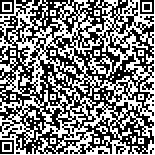下载中心
优秀审稿专家
优秀论文
相关链接
摘要

为解决当前遥感手段提取河流骨架线自动化程度不高、精度有限、易发生断裂等问题,提出一种基于数学形态学与拓扑约束理论的完整单条河流骨架线自动化提取方法。该法综合利用归一化水体指数(NDWI)和数学形态学方法提取遥感影像中的河流及河流初始骨架线;从河流初始骨架线二值图中获取断点,并自动计算膨胀系数,利用局部膨胀细化法进行连接;结合拓扑约束,利用初始骨架线对连接线进行去伪操作。结果表明,该方法能有效解决细小、易发生断裂的单条河流的完整骨架线自动提取的难题。
Automatically extracting skeleton lines from river features with high resolution remotely-sensed images can be of extremely significance for applications such as hydrological monitoring, land and ship transportation planning. The fractures of river skeleton lines cause a main concern about accurately extracting them from relative smaller river features in an integrated manner. Many scholars have investigated different methods to solve the fracture problems in road extraction, but rivers are wider and more irregular, so those methods are hard to use to connect fractures of river skeleton lines. By combining mathematical morphology and topology theories, this paper proposes a novel method to overcome the issue.
The method works as follows. First, rivers are extracted by using a Normalized Difference Water Index (NDWI) combining with the closing operation of mathematical morphology to eliminate fractures caused by bridges and holes caused by ships and small islands as much as possible. Second, the Initial Skeleton Lines (ISLs) are extracted by Rosenfeld Algorithm. Third, the broken points of these ISLs are obtained by leveraging the binary-image of the ISLs, and then the Broken Point Pairs (BPPs) are connected by using an adaptive dilation-thinning algorithm. Finally, the fake connections are removed by using a fake connection removing algorithm, which uses the topology relationship between BPPs and the skeleton lines of rivers.
The results show that the proposed method can be applicable to extract integrate skeleton lines for single rivers that are usually extracted with fractures. To a single river, especially in flat terrain, the skeleton lines extracted by the proposed method are more consistent to the practical situation than the river network extracted from DEM by Arc Hydro Tool using of shapes and positions. The fracture problem can be solved by adaptive dilation-thinning algorithm, which can find the most adaptive dilation factor to images. The accuracy of fracture connection was up to 85%.
Skeleton lines of rivers extracted by the proposed method are highly consistent to the practical situation. To solve the fracture problem, an adaptive dilation-thinning algorithm was proposed, which overcomes the shortcoming of the min pair of breakpoints method that the operating rate is low while the error rate is high when dealing with large images, and also overcomes the shortcoming of traditional dilation-thinning method that deformation happens when dealing with long fractures. Removing the fake connections operation according to topology constraints greatly reduces the connection error rate. The method will provide a new idea for extracting natural linear features from remotely-sensed images.

